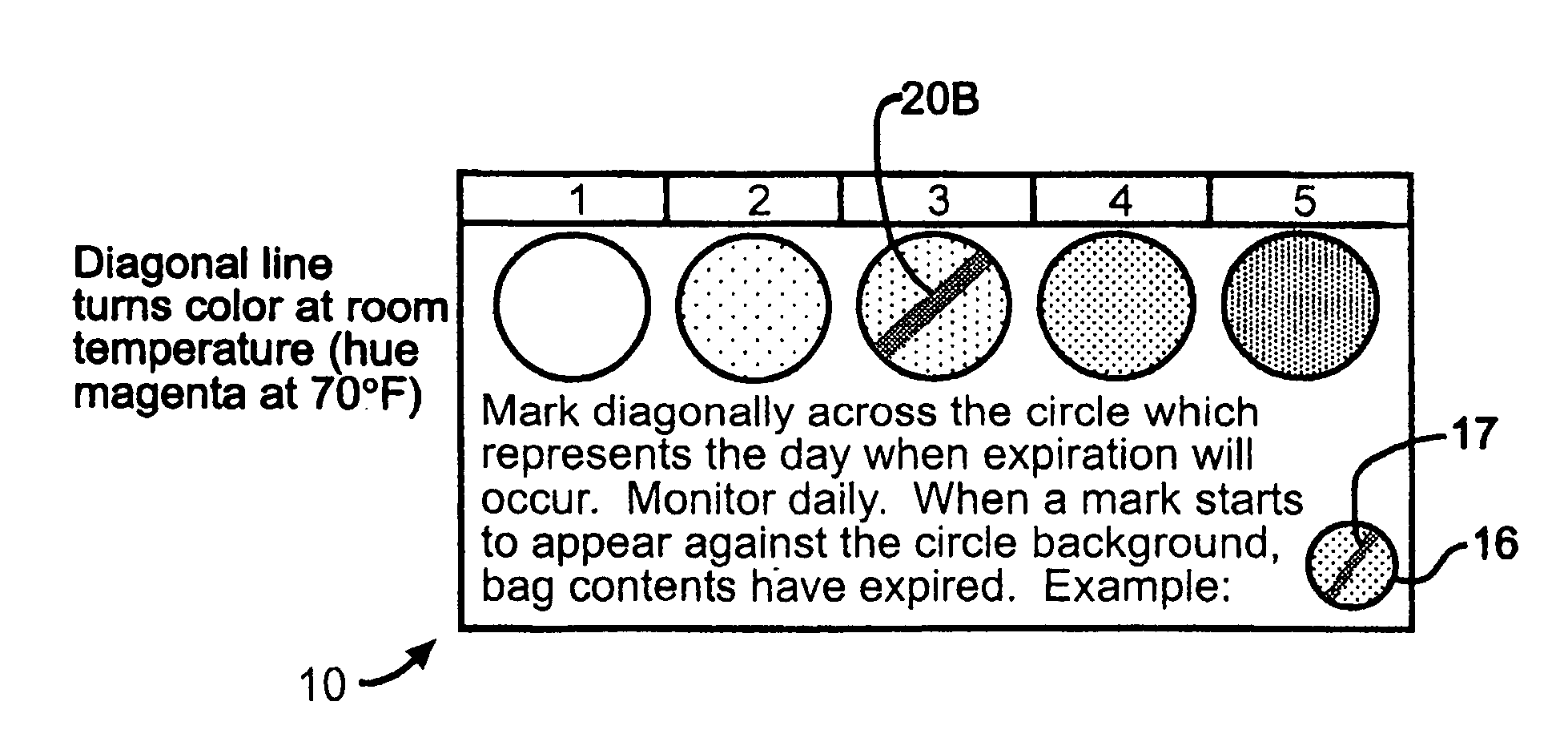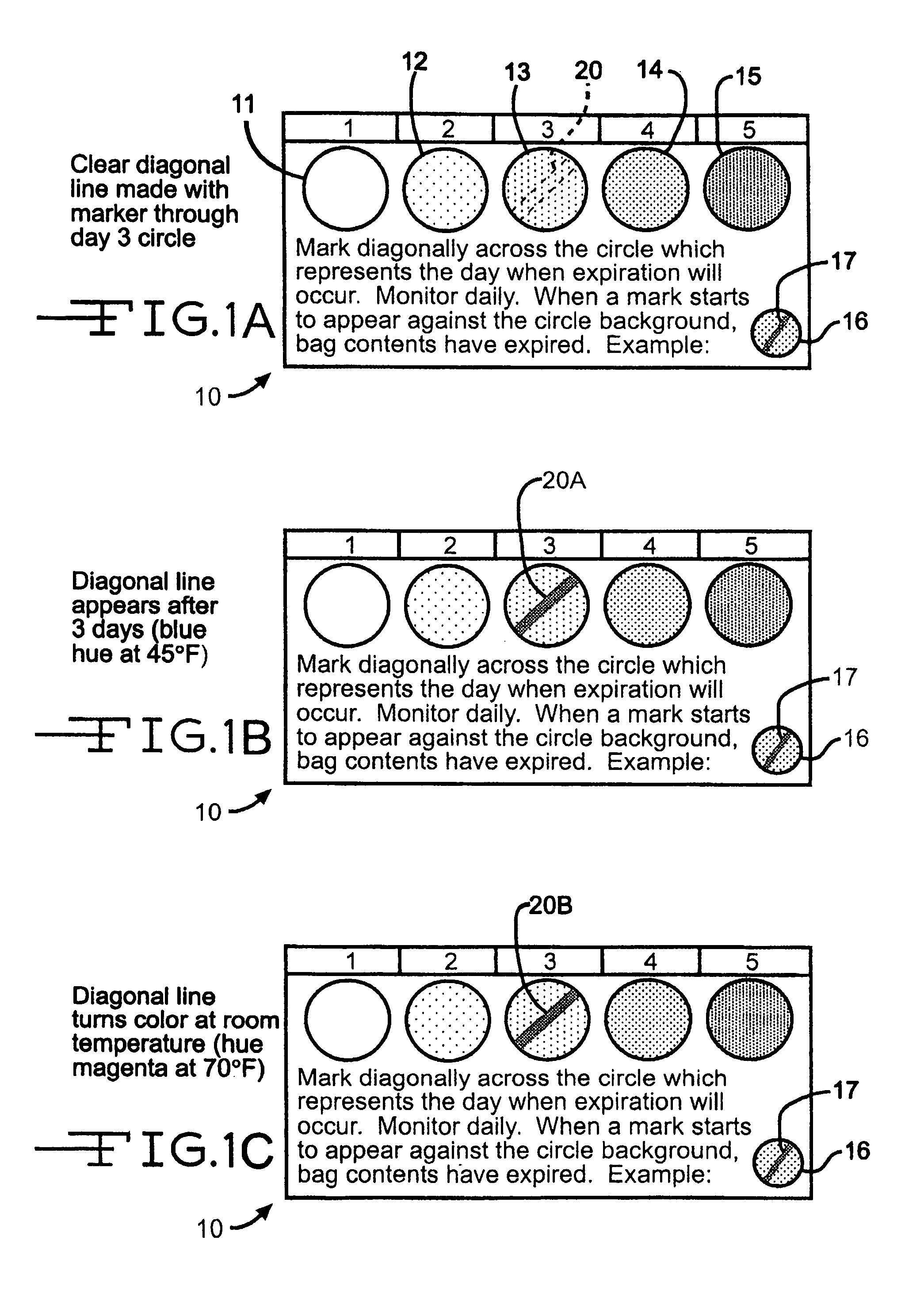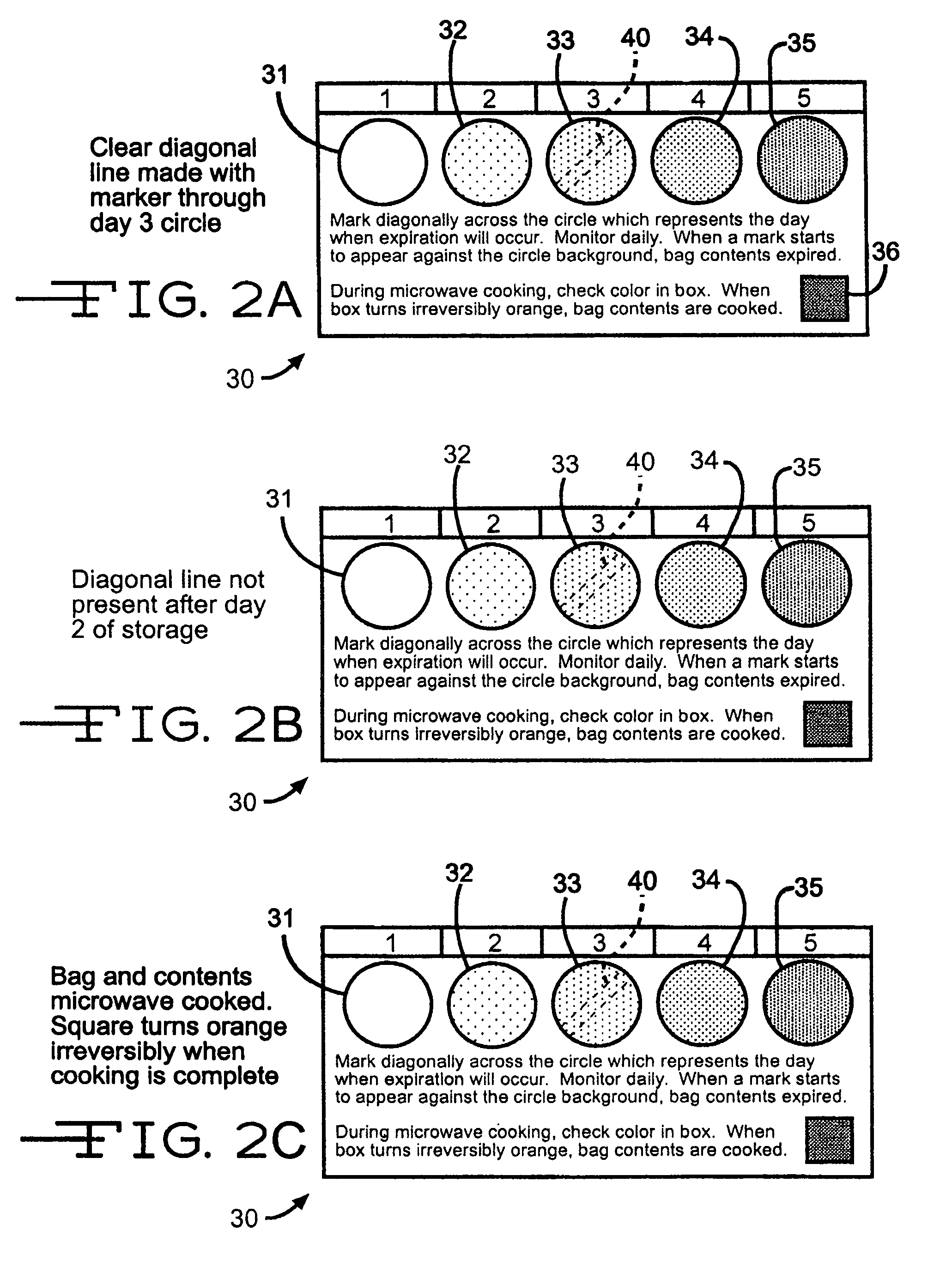Plural intrinsic expiration initiation application indicators
a technology of intrinsic expiration and application indicators, which is applied in the direction of chemical indicators, instruments, heat measurement, etc., can solve the problems of complex and often inaccurate inventorying methods, and do not integrate the time and temperature history of a particular item in inventorying methods
- Summary
- Abstract
- Description
- Claims
- Application Information
AI Technical Summary
Benefits of technology
Problems solved by technology
Method used
Image
Examples
example 1
[0156]Preparing ink jet printed time-temperature / temperature pressure sensitive Dissolve-A-Way® label substrates: Dissolve-A-Way® label (DayMark Corporation) was ink jet printed using a solution of 150 mg / ml 10,12-tricosadiynoic acid dissolved in chloroform / ethanol 1 / 1 v / v. Dissolve-A-Way® sheets were cut to 8.5 inch by 11 inch and inserted into an ink jet printer (HP PSC 2210). The print setting was configured for photo-quality to ensure the highest ink delivery. The black ink jet cartridge was utilized for delivering the time-temperature ink composition. An empty cartridge was opened by removing the top plate, thoroughly cleaned with water and then rinsed and dried with ethanol. The cartridge was filled with 10 ml aliquots of solution (above), re-inserted in the printer and printing initiated. Solid print areas were designated that completely covered the page with the exception of a slim border. Printed sheets were activated by polymerization with ultraviolet light (254 nm). A 6 b...
example 2
[0160]Preparing ink jet printed time-temperature / temperature Tyvek™ substrates: The plastic film Tyvek™ (Du Pont Company) was ink jet printed using a solution of 150 mg / ml 10,12-tricosadiynoic acid dissolved in chloroform / ethanol 1 / 1 v / v. Tyvek™ sheets were cut to 8.5 inch by 11 inch and inserted into an ink jet printer (HP PSC 2210). The print setting was configured for photo-quality to ensure the highest ink delivery. The black ink jet cartridge was utilized for delivering the time-temperature ink composition. An empty cartridge was opened by removing the top plate, thoroughly cleaned with water and then rinsed and dried with ethanol. The cartridge was filled with 10 ml aliquots of solution (above), re-inserted in the printer and printing initiated. Solid print areas were designated that completely covered the page with the exception of a slim border. Printed sheets were activated by polymerization with ultraviolet light (254 nm). A 6 bulb (18 inch low pressure mercury vapor) ligh...
example 3
[0164]Pre-printed plural intrinsic time-temperature indicator flexographically printed on pressure sensitive label stock: A pre-polymerize / sensitized layer of polymeric polydiacetylene was formed using a nitrocellulose ink base and printed using a flexographic printing process. The ink base was made using a common solvent-based nitrocellulose ink base used in solvent base flexographic printing process. The solvent carrier was used to dissolve a mixture of 15% by weight 10, 12 tricosadiynoic acid and 1.5% by weight 10, 12 pentacosadiynoic acids. The ink base was purchased from Wykoff Corporation. The monomeric diacetylenic acids were added to their corresponding concentrations, mixed and dissolved in the ink base.
[0165]After formulation of the ink base, the formulated ink was printed on to a pressure sensitive label stock using a flood coating technique to ensure complete coverage on the printed substrate. The printed substrate was dried using an attached blow dryer in the printing u...
PUM
| Property | Measurement | Unit |
|---|---|---|
| temperatures | aaaaa | aaaaa |
| temperature | aaaaa | aaaaa |
| temperature | aaaaa | aaaaa |
Abstract
Description
Claims
Application Information
 Login to View More
Login to View More - R&D
- Intellectual Property
- Life Sciences
- Materials
- Tech Scout
- Unparalleled Data Quality
- Higher Quality Content
- 60% Fewer Hallucinations
Browse by: Latest US Patents, China's latest patents, Technical Efficacy Thesaurus, Application Domain, Technology Topic, Popular Technical Reports.
© 2025 PatSnap. All rights reserved.Legal|Privacy policy|Modern Slavery Act Transparency Statement|Sitemap|About US| Contact US: help@patsnap.com



